|
za iyun' 2004 goda.
![]() Tobacco Lunar Science
Tobacco Lunar Science
30.06.2004 | Lunnoe foto dnya
Public outreach is NASA's term for helping the general public become familiar with space science and NASA's contributions to it. Today, the Internet is the premier tool for broadly disseminating information about space. But these cards demonstrate an earlier effective method to bring the knowledge to the matches, err, the masses.
 Fantastic Furnerius
Fantastic Furnerius
29.06.2004 | Lunnoe foto dnya
"Fantastic" is probably not an adjective that would have been applied to Furnerius anytime during the last 3 billion years! It is a much modified older crater that has seen better eons. But this is a fantastic telescopic image - better than any in the Consolidated Lunar Atlas or any other I've seen.
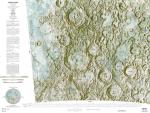 LACs and More!
LACs and More!
28.06.2004 | Lunnoe foto dnya
Without saying a word, a treasury of lunar maps has appeared online. The Lunar Atlases section of the Lunar & Planetary Institute website has been an invaluable resource for Lunar Orbiter IV, Consolidated Lunar Atlas and Apollo handheld images. On June 24, the good people at LPI added digitized versions of various lunar maps.
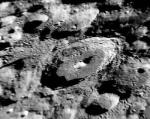 An Older Tycho
An Older Tycho
27.06.2004 | Lunnoe foto dnya
Have you ever set up your telescope when the Moon is about 9 days old and scanning the terminator said, "Must be a great libration, Tycho is pretty far south tonight"? I have, and then I realized that I've been fooled once again by Tycho's look-alike, Moretus.
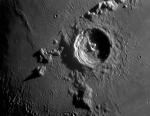 An Older Copernicus
An Older Copernicus
26.06.2004 | Lunnoe foto dnya
Copernicus is the exemplar of a large complex crater. There are a few dozen other relatively fresh Copernicus-like craters on the lunar nearside - and a significant, but often overlooked one lurks just a few hundred kilometers to the east. Eratosthenes is a junior Copernicus - 58 km diameter vs 93 km - and is somewhat older.
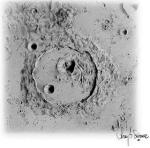 Cassini Observed
Cassini Observed
25.06.2004 | Lunnoe foto dnya
Superb artistic skill and scientific insight infuse Anthony Sanchez's drawings of the lunar surface. As an experienced airbrush illustrator who worked at the Office of Lunar and Planetary Cartography of the US Geological...
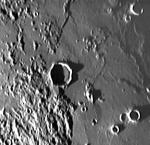 Gambart Environs
Gambart Environs
24.06.2004 | Lunnoe foto dnya
South of Copernicus is the flat floored, 25 km wide crater Gambart. This is a member of a class of relatively fresh looking craters with smooth rims and rough polygonal outlines. Some researchers have argued that Gambart-like craters are volcanic calderas, while other scientists interpret them as secondary craters from the formation of impact basins.
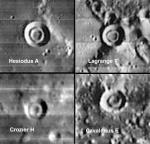 Concentric Craters
Concentric Craters
23.06.2004 | Lunnoe foto dnya
The nearside of the Moon contains more than 11,000 craters larger than 3.5 km wide. Virtually all of them are standard impact craters, mostly small, ranging from very fresh to quite degraded. There are a handful of oddball craters and one of the weirdest and least studied are concentric craters.
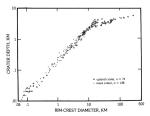 A Fundamental Relation
A Fundamental Relation
22.06.2004 | Lunnoe foto dnya
LPOD mostly features images of the Moon accompanied by a tidbit of knowledge. But commonly in science it is a graphical summary of data that tells some of the most important stories. This graph shows the relationship between crater diameter (horizontal axis) and depth (vertical axis) for 212 fresh lunar craters.
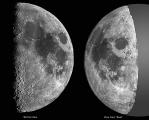 Re-Projecting the Moon
Re-Projecting the Moon
21.06.2004 | Lunnoe foto dnya
Because the Moon is a sphere all features away from the sub-Earth point are seen with distortion that becomes progressively more extreme as the limb is approached. Circular craters look more and more elliptical until, at the limb they are seen in profile.

